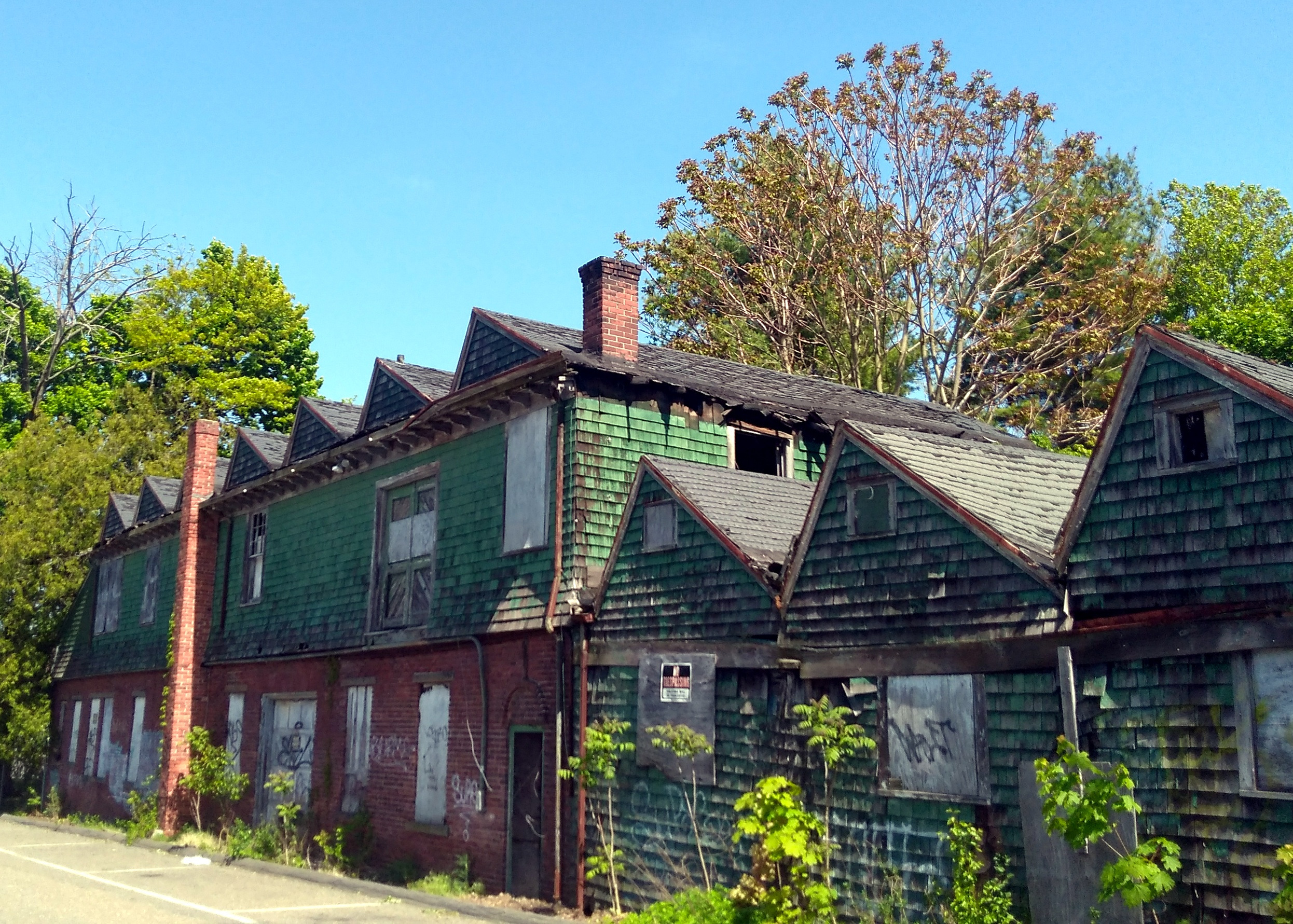By Marilyn May

The Simon Laboratory in Milford. The building had what’s called a “saw tooth” roof that had skylights to let fresh air and light into the rooms. Photo courtesy of Marilyn May.
Submarine pioneer Simon Lake’s laboratory was behind the former Smith Funeral Home in Milford. This building was demolished in July.
Simon Lake, who lived from 1866 to 1945, was a mechanical engineer and naval architect who lived in Milford and is credited with the development of basic modern submarine technologies.
In 1907 he bought the mansion at 135 North Broad St. that was built in 1850 for William Fowler and constructed his engineering office and experimental laboratory on the back of the property near the train tracks. Lake was born in New Jersey and lived in Milford until his death in 1945. He is buried in the King’s Highway Cemetery.
When Lake was 12, he was inspired by Jules Verne’s Twenty Thousand Leagues Under the Sea, a novel of undersea travel. Many years later in 1898, Jules Verne sent Lake a cable from Amiens, France. It read: “While my book ‘Twenty Thousand Leagues Under the Sea’ is entirely a work of imagination, my conviction is that all I said in it will come to pass.” Verne mentioned a recent voyage by Lake’s experimental submarine, the Argonaut, that was the first submarine to operate successfully in the open seas in 1898. Verne continued: “This conspicuous success of submarine navigation in the United States will push on under-water navigation all over the world. The next great war may be largely a contest between submarine boats.”
During a lifetime of work, Lake acquired 200 patents, including ones for periscopes, ballast tanks, divers’ compartments. The most famous patent was for even-keeled hydroplanes. He is regarded as the father of the modern submarine.
Lake’s earliest vision was to make submarines that could locate sunken ships and retrieve cargo. An 1897 article in the Sun newspaper reported what Lake really wanted: “What she [the Argonaut] is after is treasure, golden ducats and Spanish doubloons, buried between the ribs of long-forgotten ships wrecked upon stormy coasts, both on this side and the other side of the Atlantic.”
He also dreamed of submarines carrying cargo and going underneath sea ice to ice-bound ports in such places as the Baltic Sea and the Great Lakes. He thought submarines could be used in cultivation of oysters and other shellfish, pearl and sponge fisheries, and to chart and improve waterways.
Lake had no success selling his ideas about subs as an instrument of peace. The Navy was looking for weapons of war, and Lake’s rival, John Holland, was awarded the contracts to build submarines for war.
One of Lake’s early inventions can still be seen in Milford Harbor at low tide. It’s a barnacle-encrusted submersible, not a submarine, off Rogers Avenue and north of Port Milford marina. That relic is a chamber that would have been lowered to the ocean floor by a boom on a ship to reach a sunken ship and salvage its cargo.
The submersible is near a site on Rogers Avenue where Lake ordered two identical houses built for his daughters, Miriam Catherine Lake and Margaret Vogel Lake. Today the houses are private residences. Lake also had a son, Thomas Alva Edison Lake, who lived in Stratford and worked on inventing super-fast speedboats.
Lake’s last submarine, the Explorer, built in 1936, is on display at Lisman Landing on Milford Harbor. It has a basket-like scoop on the front intended for retrieving things on the ocean floor. Lake built and lost a number of fortunes during his lifetime and died of a heart attack in 1945. A condo is planned for the site of his laboratory.